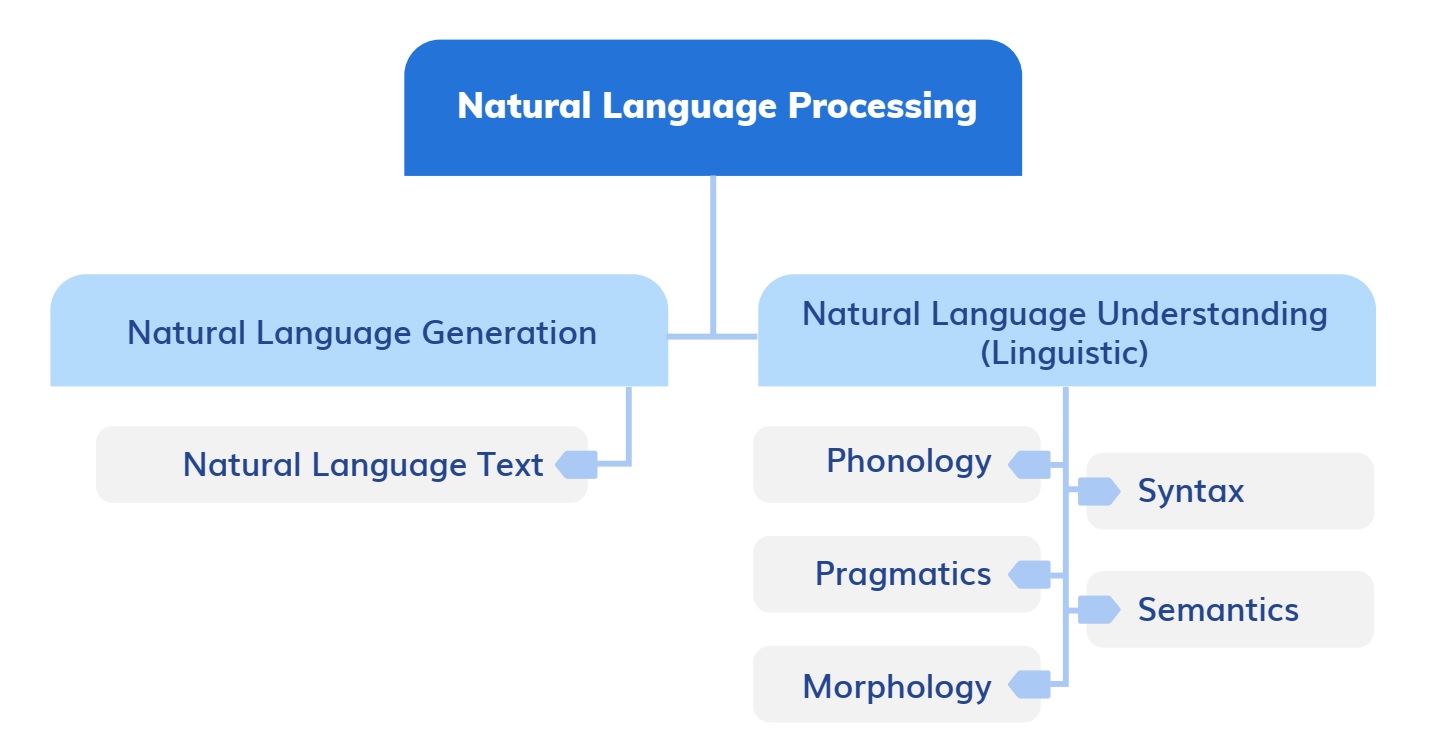NLP is the field of AI concerned with the interactions between computers and human (natural) languages, in particular how to program computers to process and analyse large amounts of natural language data.
Before we dive into NLP we need to understand the two types of data that exist: Structured and unstructured.
Structured data is data that has a pre-defined specific format. For example, spreadsheets, tables, databases
Unstructured data, on the other hand, is data that doesn’t follow a pre-defined specific format. For example, emails, chats, blogs, books, audio files, video files, images.
Two parts to NLP: Natural Language Understanding (NLU) and Natural Language Generation (NLG).
NLU refers to mapping the given input from Natural Language into formal representation and analysing it.
NLG is the process of producing meaningful phrases and sentences in the form of natural language from some internal representation. NLG is generally much easier than NLU since
when we know the meaning that needs to be expressed, there are certain rules of language such as syntax and semantics that need to be followed in order to create an appropriate
sentence.
| Use case | Explanation |
|---|---|
| Sentiment analysis | You are the CEO of a luxury travel company and you want to know if the happiness of your customers affects your revenue. |
| Speech recognition | to convert audio into text for further processing. |
| Chatbots | to provide 24/7/365 customer support. |
| Machine translation | to help you reach new markets with minimal investment. |
| Autocompleting text | similar to what Gmail does to help you increase your employee’s efficiency through a centralized knowledge base. Or to improve how your customers interact with your product / website. |
| Spell checking | to make sure that documents don’t contain errors. Especially relevant in industries with high compliance requirements such as banking, insurance and finance. |
| Keyword search | to locate relevant information faster across all data facilities, leading to increased efficiency. |
| Advertisement matching | For example, when you search for a new car on Google or write an email about it to a friend, you will later receive car adverts. |
| Information extraction | to extract the essence from large volumes of unstructured data. |
| Spam detection | to clean your email inbox. |
| Text generation | to create new text, e.g. client contracts, research documents, training materials, and so on. |
| Automatic summarization | to add summaries to existing documents. |
| Questions answering | to answer specific questions based on disparate information sources. |
| Image captioning | to annotate images. |
| Video captioning | Videos can take a long time to watch. Sometimes it’s faster to extract information from them in the form of text and then process it further using other NLP techniques like summarization. |

